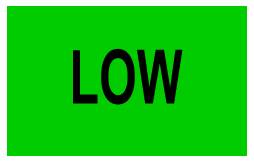Fire Extinguishers
Welcome to our Fire Extinguisher Safety page. Knowing how to properly use a fire extinguisher can make a critical difference in an emergency—but before you grab one, it's important to understand how fire works. Fires need heat, fuel, and oxygen to ignite and grow, and different types of fires require different approaches to safely extinguish them. That’s why choosing the right type of extinguisher and knowing how and when to use it is just as important as having one nearby. This page will guide you through the basics of fire behavior, extinguisher types, and safe usage to help you stay prepared and protect what matters most.
Fire Tetrahedron
The fire tetrahedron is a simple model that explains the four elements a fire needs to exist: heat, fuel, oxygen, and a chemical chain reaction. If any one of these elements is removed, the fire will be extinguished. Here's what each part means:
- Heat – The energy source that raises the material to its ignition temperature (like a spark, flame, or friction).
- Fuel – Any combustible material that can burn (wood, paper, gasoline, etc.).
- Oxygen – Usually from the air; it supports the chemical reactions that cause combustion.
- Chemical Chain Reaction – The ongoing series of reactions that keep the fire going once it starts.
Think of it like a pyramid—knock out one side, and the whole thing collapses. That’s why fire extinguishers are designed to disrupt one or more of these elements.

Fire Types
Fires are categorized into different classes based on the type of material or substance involved:
- Class A – Fires involving ordinary combustibles like paper, wood, cloth, rubber, and plastics.
- Class B – Fires fueled by flammable liquids and gases such as gasoline, oil, paints, and lacquers.
- Class C – Fires involving energized (live) electrical equipment, including motors, appliances, and power tools.
- Class D – Fires involving combustible metals like magnesium, titanium, sodium, and potassium.
- Class K – Fires involving cooking oils or fats typically found in commercial kitchens and cooking appliances.
Here is an image explaining the class of fire extinguishers, ie Type A-B, along with how they are marked and what types of fires they should be used for.

Types of Fire Extinguishers
Different types of fires require different types of fire extinguishers. Each extinguisher is designed with specific characteristics, strengths, and limitations to effectively handle certain classes of fires.
The three main types of portable fire extinguishers are:
Water Extinguishers: Water extinguishers are filled roughly two-thirds with water and pressurized with air. They are effective on Class A fires—those involving ordinary combustibles—by cooling the burning materials and removing heat.
Important Safety Warnings:
- Never use water on electrical fires – Water conducts electricity and can cause electrocution.
- Do not use on flammable liquid or cooking oil fires – Water can cause the fire to spread, making the situation more dangerous.
Carbon Dioxide (CO₂) Extinguishers: CO₂ extinguishers are filled with pressurized carbon dioxide gas. They are most effective on Class B (flammable liquids) and Class C (electrical) fires. CO₂ works by displacing oxygen and creating a blanket over the fuel, interrupting the chemical reaction at the fire’s surface.
Be thorough when using a CO₂ extinguisher—it has a limited spray range and typically discharges in 10 to 30 seconds. A rigid plastic horn at the nozzle helps you aim the spray directly at the base of the fire.
Important Safety Warnings:
- Do not use in confined spaces without proper respiratory protection. CO₂ displaces oxygen, which can make breathing difficult or dangerous.
- Not recommended for Class A fires (ordinary combustibles) as the fire may continue to smolder and reignite once the CO₂ dissipates.
Dry Chemical Extinguishers: Dry chemical extinguishers are the most commonly used type and come in several variations. Each extinguisher is labeled for the specific fire classes it can handle—for example, an ABC extinguisher is suitable for Class A, B, and C fires. These extinguishers release a fine powder that forms a barrier between the fuel and oxygen, while also disrupting the chemical reaction that sustains the fire.
They typically have a short to moderate spray range and provide 10 to 25 seconds of discharge time, so accuracy is important when using them.
Important Safety Warnings:
- The powder residue can damage sensitive equipment such as motors, electronics, and computers. Use with caution around valuable or delicate devices.
Using a Fire Extinguisher
Before using a fire extinguisher, you should first consider the situation and determine if using a fire extinguisher is right for the situation or not. Here are some situations where you should not use a fire extinguisher:
- You do not know what material is burning.
- You do not know what type of fire extinguisher to use.
- You do not know how to use the fire extinguisher.
If you're unsure about your ability to safely control the fire—even if you’ve had fire extinguisher training—or if you don’t have the proper type of extinguisher, do not attempt to fight the fire. Instead, activate the fire alarm, evacuate the area, and call the fire department immediately. Your safety is the top priority.
If the situation requires the use of a fire extinguisher and you are confident in using one, then follow these steps.


